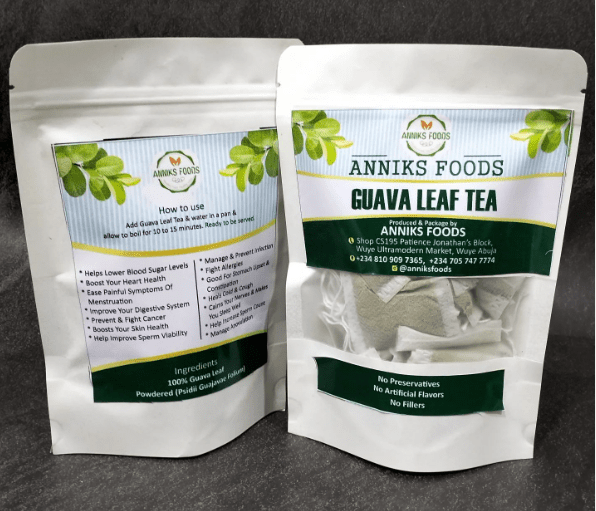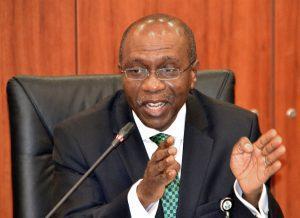• Key structural issues should be addressed, say, economists, LCCI
• Capital flight at its highest as inflows dry up
The Federal Government faces tough choices between control of escalating commodity prices and boosting economic growth as the inflation rate returns to the 2017 level when it almost hit 20 per cent.
It is likely that actual inflation control, which is to assist households to mitigate high costs, will be jettisoned for divergent policies to urgently boost growth and drag the ailing economy out of recession. That means citizens should brace up for tougher times.
Economists have agreed that there is a tradeoff between employment growth policy actions (production growth) and inflation control measures.
Data released by the National Bureau of Statistics (NBS) on Friday showed that the headline inflation rose to 15.75 per cent in December, the highest in the past 36 months.
The last time Nigeria’s headline inflation was this high was in November 2017 when the index stood at 15.9 per cent before a retreat saw it crawling down to 11.02 per cent about 16 months ago. The government promised to tame the inflation rate at a single digit.
Single-digit inflation was achieved in 2013. It hovered between seven and 10 per cent between January 2013 and January 2016 after which it was let loose. Since then, inflation control has remained a major headache of the Monetary Policy Committee (MPC) with its members admitting that achieving a balance between intolerable inflation rate and sustaining growth momentum had thrown them into a “dilemma”.
For the MPC, 2021 begins today when its members start meeting to make key decisions on lending rate and money supply, which determine the direction of inflation and the amount of liquidity available for private sector investment.

Last September, the MPC reduced the Policy Rate by 100 basis points to 11.5 per cent to increase the money supply and stimulate growth. The rate has remained at 11.5 per cent, leaving the Committee with three options – retain, increase, or hold – to pick from today.
But that is not going to be an off-the-shelf decision as it sounds. For an economy that is suffocating under contraction and soaring unemployment and rising prices (stagflation in technical terms), MPC is facing a devil’s choice.
But economists have suggested that the CBN is more preoccupied with a growth stimulation mandate. Hence, an increase in MPR to reduce the money supply and tame the recalcitrant inflation is not a likely option. And even if the CBN defies expectations and opts for a downward review of the lending rate, they balked at the ability of the action to break the trend.
Chief Executive of Cowry Asset Management Limited, Johnson Chukwu, said the MPC is not likely to reduce the money supply as it is fully committed to efforts to stimulate growth to get the bleeding economy out of the woods.
“We have two major causes of the current crisis. There is a recession. Secondly, the inflation rate is getting out of hand. Currently, the MPC is more interested in dealing with a recession, which means it will continue with expansionary monetary policy to boost liquidity. While liquidity may boost production, it will worsen the inflation rate. The fiscal authority is expected to take complementary measures to reduce inflation. But that is not happening,” Vice Chairman, Highcap Securities Limited, David Adonri, noted in a phone interview.
Also speaking, a professor of economics and former director-general of West African Institute for Financial and Economic Management, Akpan Ekpo, insisted that monetary tools “are weak and ineffective in the face of recession”.
With the real interest rates currently in the negative region, the professor wondered how a downward review of the policy rate would affect liquidity. Suggesting that the only option open to the monetary authority is to continue to support the fiscal authority through its development function, the professor said that there is currently an inconsistency between savings and investment, another challenge that requires urgent attention.
Ekpo, who attributed the high food inflation rate, currently close to 20 per cent, to the inefficiency of the Ministry of Agriculture, said “Nigeria is already in a crisis” situation. He called on the government to find a way to spend out of the deepening crisis while noting that the worst storm is yet ahead.
“With the GDP growth still contracting, there is no doubt that we are heading into a deeper crisis. To get out of it, the fiscal authority should aggressively spend. On the supply side, the government should implement policies that will give the private sector incentives to get the country out of recession,” the economists suggested.
Still, another professor of economics, Ken Ife, has raised the alarm that the weak naira has led to massive importation of Nigeria’s food by neighbouring countries. This, he said, is responsible for the huge gap between food and all items less farm produce inflation index in recent months. While food inflation stood at 19.56 per cent in December, the inflation of all items except farm produce was 11.37 per cent.
Unfortunately, Ife said, the government cannot do anything to stop the cross-border food movement of food produced in Nigeria, as such action would violate ECOWAS and other relevant treaties.
The worse, he lamented is that the raw food exported from Nigeria is processed (which is not different from drying) and returned to the country at much higher prices. The solution, he advised, is to develop the agriculture value chain to boost local processing.
Also, Ife noted that capital has increased drastically as returns on fixed-income investments have bottomed out, adding that the situation is even worsened by dwindling capital importation. He noted that investors have continued to move their investments from Nigeria to economies with low inflation rates.
He said: “In 2018, capital importation was $17b. In 2019, it was $25b. In Q1 2020, it was #5.8b; in Q2 2020, it was $1.5b, while it was $1.4b in Q3 2020. The Q4 2020 data is not ready but I doubt if we would get up to $10b last year.”
Ife said the diaspora remittances have also continued to fall as COVID-19 and low yields continue to fall. “Tell me why you will invest in an economy with yields of treasury bills of less than one per cent but an inflation rate of 15 per cent? If you invest in Nigeria’s treasury bills today, your interest rate is about minus 14 per cent. Why won’t you take the money to America and European countries where the inflation rate is less than one per cent?” he asked.
Ife also noted that much of the excess liquidity, resulting from the exclusion of the local investors from treasury bills, is taken to the equity market. This, he said, has resulted in an overvaluation of stocks, with a bubble waiting to burst.
“These are the problems inflation has caused. The challenge in the economy is structural, and we must address it structurally,” Ife stressed.
But a financial analyst, Ayodeji Ebo, does not think the country is in a crisis. He admitted that the purchasing power of the people is being eroded while the “level of poverty is growing by the day”. He hoped the reopening of the land borders would stem the inflation rate.
On the contrary, he said the likely increase in petrol (PMS) price to accommodate the rising landing cost and an increase in energy prices would remain the downside of the inflation equation.
According to the Chamber of Commerce and Industry (LCCI), headline inflation will remain high as the combination of food supply shocks, FX policies, higher energy costs, FX illiquidity and heightened insecurity in major food-producing states continue to put pressure on domestic prices.
“We believe a broad-based harmonization of fiscal and monetary policies towards addressing the identified structural constraints will significantly help to moderate inflationary pressure in the medium term,” the chamber’s Director-General, Dr. Muda Yusuf said.
According to analysts at Cordros, the upward trajectory in food prices and inflation can be attributed to the sustained impact of the poor harvest season, festive-induced demand, which further widened the supply gap, high food distribution cost, and lingering security challenges in food-producing states.
Famine Early Warning Systems Network (FEWSNET) had observed that increased conflict in early December, which caused further displacement in the Northeast, particularly in Borno State could worsen prices. The analysts said conflicts limit access to farms, thereby reducing the already expected sub-optimal harvest.





















